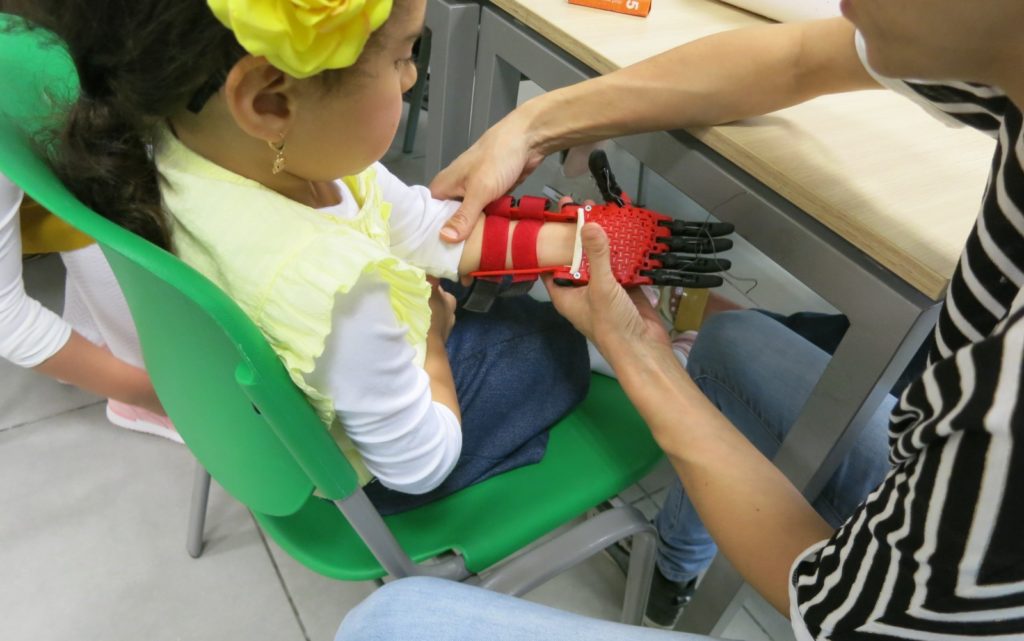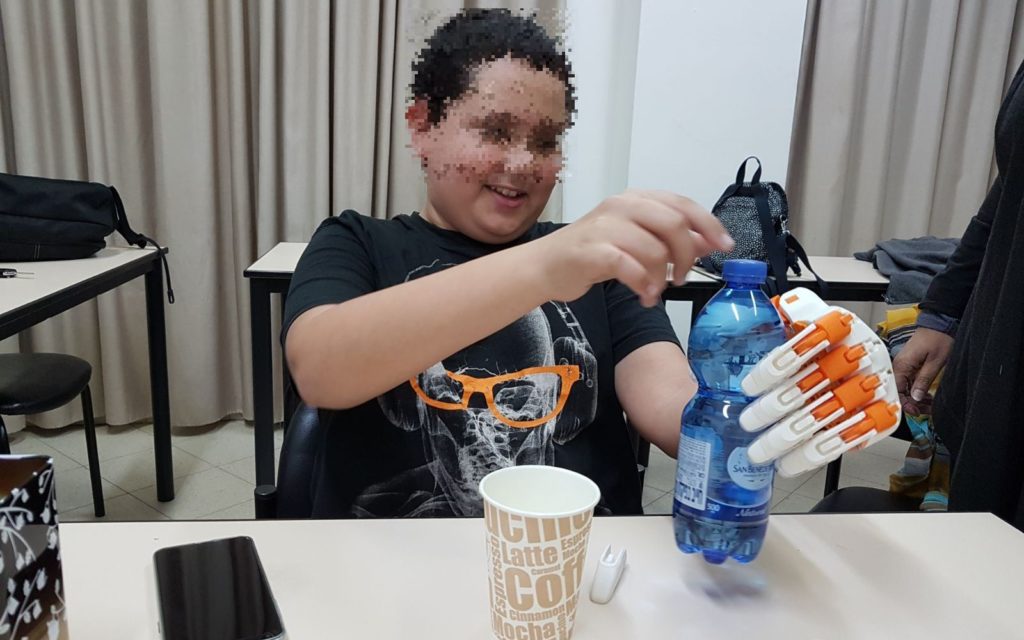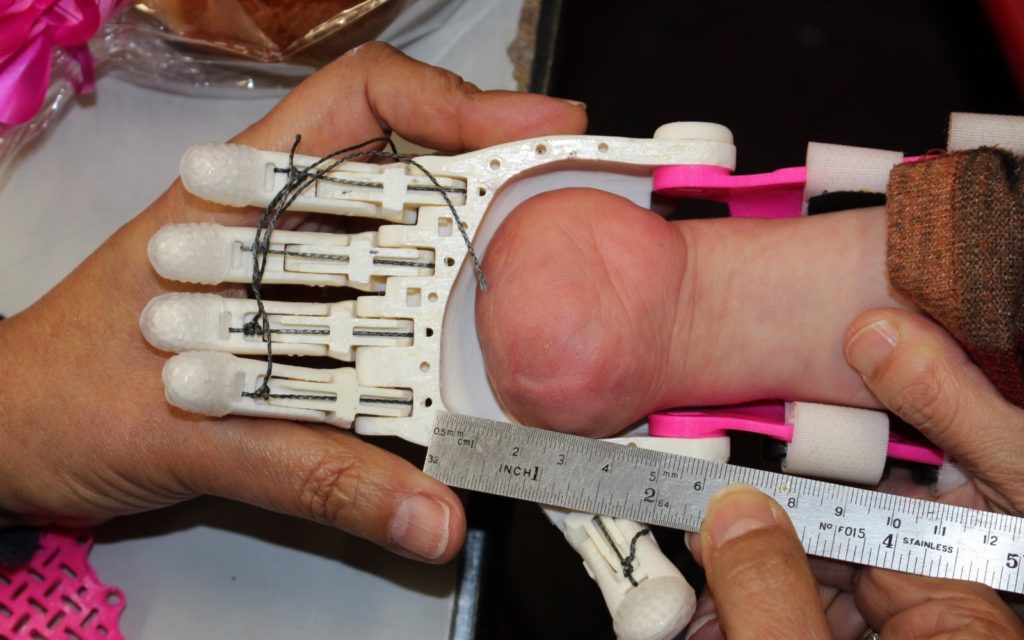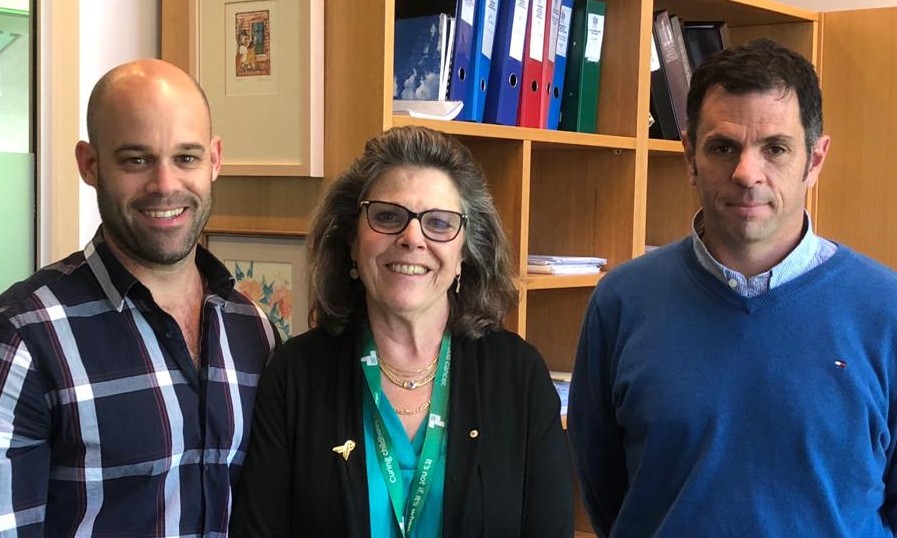
Israeli organisation Haifa 3D utilizes cheap and cheerful technology to make bionic hands available to growing numbers of adults and children.
Superman, Spiderman, Hello Kitty or FC Barcelona – if you had the choice to stylize your appearance according to your favorite superhero, which would you choose?
This tough choice is one that faces Israeli children about to receive a bionic hand. And according to the man offering these hands, the more colorful and standout they are, the better.
“For me personally it was a surprise that the kids don’t want hands that resemble natural ones, but technological hands that are similar to robotic ones,” says Yacov Malinovich, cofounder of Haifa 3D, an organization that provides Israeli children and adults with bionic hands, arms and accessories.
“They usually order superhero hands,” he chuckles.
Most children opt for colorful printed hands that give them newfound confidence. Photo courtesy of Haifa 3D
The option to customize and create colorful hands is just one of the advantages of using 3D printing technologies. Another is that the simple process results in a mechanical arm made of plastic.
“That’s its advantage and disadvantage,” Malinovich explains. “If it breaks, we fix it or renew it; it’s part of the simplicity.” And Malinovich is actually more than happy to see broken (plastic) limbs, since there’s no better indication that they’re being extensively used.

A big plus in 3D-printed arms is the low cost, making it possible for the organization to help as many people as possible. Which is just as well, considering that all participants in the process are volunteers and the hands are given out for free.
Malinovich, a physicist by education, founded Haifa 3D together with aeronautic engineer Yoav Medan several years ago. They originally focused on familiarizing the wider public with 3D printing.
But upon learning from one of their associates of the possibility to print out limbs, they began devoting themselves entirely to the field and became the Israeli branch of Enabling the Future, an international network of volunteers who print out 3D hands.
“We began with children who were born without hands,” Malinovich explains. “They grow quickly and [the prosthesis] needs to be replaced quickly. So they don’t actually have a solution.”
Malinovich and Medan began working on existing American models, modified to suit according to size. “But already pretty much at the beginning we realized that each child is a unique case,” he says. “We began finding solutions to improve the plans.”
They then looked for solutions for kids with arms amputated below the elbow, as well as adults struggling to find commercial solutions. To date, the organization has helped 60 people, many of whom have received multiple hands and accessories.
3D printed hands enable users to carry out activities previously impossible for them. Photo courtesy of Haifa 3D
The organization benefits from close cooperation with researchers and workers at the Technion – Israel Institute of Technology. It also receives used equipment donations.

One such example is large, expensive 3D printers donated by Israeli construction software company Autodesk. When the company’s Innovation Lab Program acquired newer, smaller printers, manager Netanel Gueta searched for a place that could put the old ones to good use for the greater community.
After six months, he found Malinovich on Facebook. “It really, really suits what they’re doing,” Gueta says of the printers. “They’re very tall height-wise, so can build upward” – just what’s needed for limbs.
Fitting and adjusting
The process of fitting people with printed hands usually takes a few weeks. First, prospective recipients are checked by specialized physiotherapists who make sure that the fitting is possible and that no damage could be done. Measurements are then taken, and the recipients choose colors and decorations.
A young customer is being sized up for a 3D printed hand. Photo courtesy of Haifa 3D
A volunteer team customizes existing basic models according to needs. The parts of the hand are then printed out and assembled. If it fits well, final adjustments are made before the printed hand leaves with its new owner.
However, Malinovich says, “The first hand is almost always not good enough, and it’s important that it will be really good; otherwise the kid won’t use it. I’d say that in almost all cases we check where changes need to be made and repeat the whole process for a second time.”
“Simple” printed hands aren’t the only products that Haifa 3D supplies. They’ve just finished working on a hand accessory that enables users to play the guitar. After trying it out on an adult – so as not to disappoint any kids – they’re starting to supply it to younger users, too.
Another accessory in the works enables riding a bike, since existing printed hands don’t detach from the handlebars in case of a crash, endangering the rider. That too is being tried out on a 20-year-old before making its way to children.
Another product, which has been handed out to about half of Haifa 3D’s users, is an invention called “kfafitz.” Made on a sewing machine rather than a 3D printer, it’s a sort of glove enabling hands with limited palm mobility to open and close. It’s great for people such as stroke victims or children with cerebral palsy.
Psychologically, socially uplifting
Malinovich stresses that the hands and accessories his organization provides aren’t magical.
“This hand doesn’t replace the hand that isn’t there. From a practical effectiveness point of view, it can do a limited number of things,” he says.
This doesn’t mean, however, that its influence on the user is limited.
“The greatest effect of this hand is psychological,” Malinovich says. “These children are often at the bottom of the social pecking order. And suddenly they have a superhero hand and it lifts them upward.”
“They stop hiding their hand,” he adds. “Once they receive the printed bionic hand, the hand moves forward in front of everyone. And the hand stays forward even when they don’t wear it, which is a very important effect.”
One time, the mother of a kid who received a bionic hand told Malinovich that her son’s kindergarten teacher told her he had hit another child using his bionic hand.
While the boy was appropriately admonished, his hand’s creators were pretty chuffed that he felt confident and able enough to whack another kid.
“We were celebrating,” Malinovich laughs.
Source: Israel21c.org


